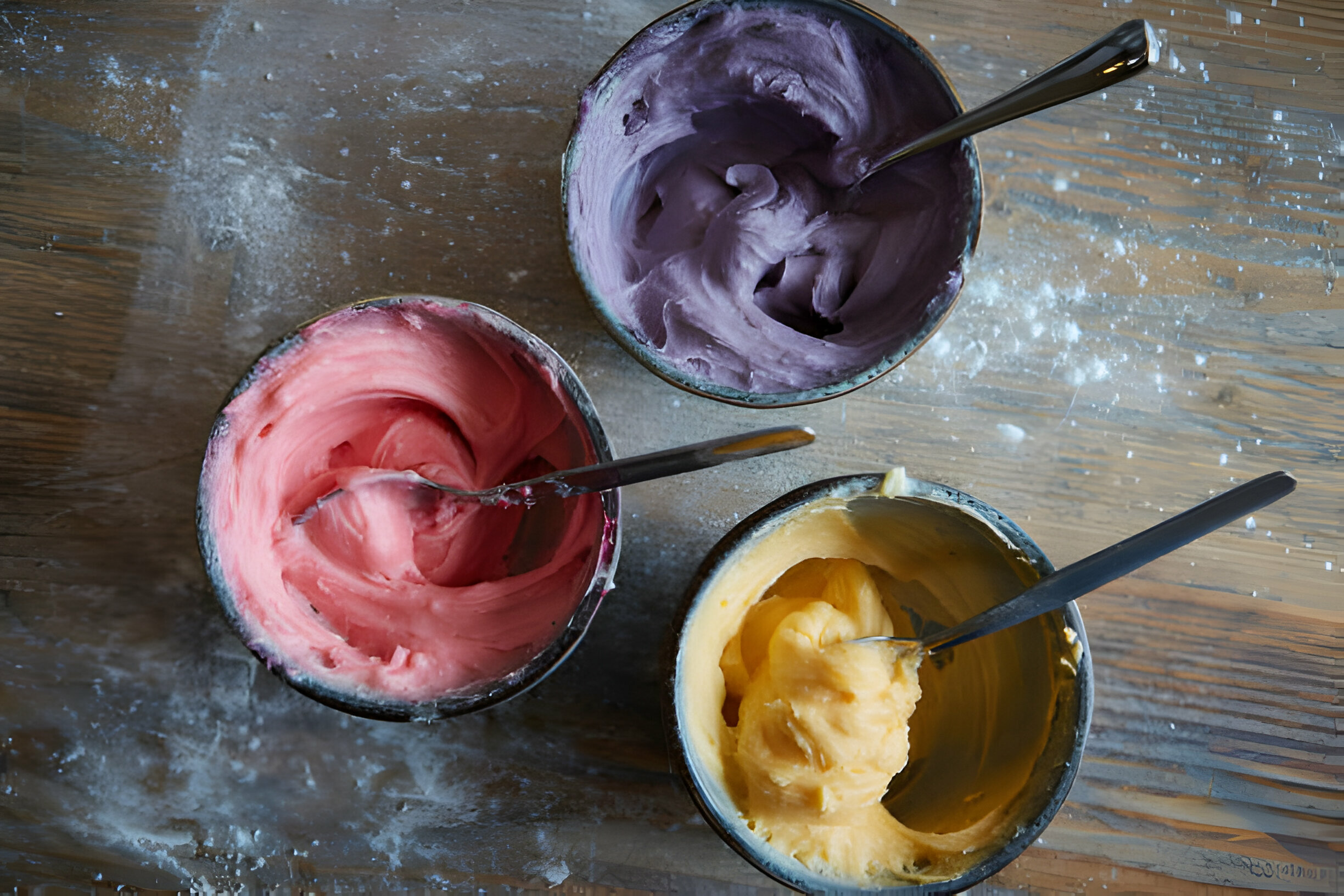Can Food Colouring Expire?
Food coloring is a ubiquitous ingredient found in a myriad of foods, adding vibrancy and appeal to our culinary creations. Often overlooked, its shelf life is a crucial aspect of food safety. As consumers, we are accustomed to scrutinizing expiration dates on perishable items but do food colorings have a similar lifespan? In this article, Can Food Colouring Expire we delve into the intriguing world of food coloring, exploring its composition, common uses, and the vital question: can food coloring expire? Understanding the expiration of food coloring is essential not only for preserving its quality but also for ensuring the safety and integrity of the dishes we create.
What Is Food Coloring?
Food coloring, also known as food dye or food coloring, is a substance added to foods or beverages to change their color. It is commonly used in both commercial food production and home cooking to enhance the appearance of dishes, create visual appeal, and make them more attractive to consumers.
Food coloring can be derived from natural sources such as plants, fruits, and vegetables, or it can be synthetically produced using chemicals. It comes in various forms including liquid, powder, gel, and paste, and is available in a wide range of colors to suit different culinary needs and preferences.
Factors Affecting Shelf Life
Factors affecting the shelf life of food coloring are multifaceted and can significantly impact its quality and safety over time. Here’s a detailed exploration of these factors:
Environmental Factors
- Light: Exposure to light, particularly sunlight and fluorescent light, can accelerate the degradation of food coloring. Ultraviolet (UV) radiation can break down the chemical bonds in the coloring agents, leading to changes in color and a reduction in potency.
- Heat: High temperatures can cause food coloring to degrade more rapidly. Storage in areas with excessive heat, such as near stoves or ovens, can accelerate chemical reactions within the coloring agents, leading to color changes and loss of efficacy.
- Moisture: Moisture can introduce water into the food coloring, potentially causing clumping or dissolution of powdered forms. Additionally, excess moisture can promote microbial growth, leading to spoilage and contamination.
Packaging and Storage Conditions
- Container Material: The type of container used to store food coloring can influence its shelf life. Airtight containers made of opaque materials, such as glass or plastic, can help protect the coloring agents from exposure to light and air, thus prolonging their stability.
- Sealing: Proper sealing of the container is crucial to prevent air and moisture from entering and compromising the quality of the food coloring. Containers with tight-fitting lids or seals help maintain the integrity of the product.
- Storage Temperature: Storing food coloring in a cool, dry place away from direct sunlight and heat sources is essential for preserving its quality. Ideally, temperatures should be consistent and within the recommended range specified by the manufacturer.
Exposure to Contaminants
- Cross-Contamination: Food coloring should be stored away from other substances that may transfer flavors, odors, or contaminants. Avoid storing it near strong-smelling or volatile substances, such as spices, chemicals, or cleaning agents, which can affect the color and flavor of the coloring agents.
- Air Exposure: Prolonged exposure to air can lead to oxidation of food coloring, especially in liquid forms. Oxidation can cause color changes and degradation of the pigments. Therefore, minimizing air exposure by tightly sealing containers after use is important for preserving the quality of the product.
By understanding and managing these factors, consumers can prolong the shelf life of food coloring and ensure its effectiveness and safety in culinary applications.
Signs Of Expired Food Coloring
Signs of expired food coloring can manifest in various ways, indicating a deterioration in quality and potentially compromising its effectiveness in culinary applications. Here are some common signs to watch for:
- Changes in Appearance: Expired food coloring may exhibit alterations in color, texture, or consistency. The vibrant hues may fade or darken, and the texture may become clumpy or grainy. In liquid food coloring, separation or sedimentation may occur, indicating a loss of homogeneity.
- Altered Smell or Taste: Expired food coloring might develop unusual or off-putting odors, signaling chemical degradation or contamination. Additionally, the taste may become stale or bitter, detracting from the desired flavor profile of the dish.
- Presence of Mold or Bacteria Growth: In cases of severe expiration or improper storage, expired food coloring may become susceptible to microbial growth. Mold or bacterial colonies may form on the surface of the product, indicating spoilage and potential health hazards if consumed.
- Ineffectiveness in Coloring: Expired food coloring may lose its potency and fail to impart the desired color intensity to food or beverages. Even when used in larger quantities, it may produce muted or inconsistent color results, compromising the visual appeal of culinary creations.
- Expiration Date: Perhaps the most straightforward indicator, checking the expiration date on the packaging is essential. If the food coloring has surpassed its expiration date, it’s prudent to exercise caution and consider replacing it with a fresh product.
Vigilance in observing signs of expiration, such as changes in appearance, smell, taste, or effectiveness, is crucial for ensuring the quality and safety of food coloring in culinary endeavors. If any signs are evident, it’s advisable to avoid using expired products and seek replacements.
Can Food Colouring Expire?
Yes, food coloring can expire, albeit the process can be slower compared to perishable food items. The expiration of food coloring is influenced by various factors including environmental conditions, packaging, and exposure to contaminants. Over time, exposure to light, heat, and moisture can degrade the chemical composition of food coloring agents, leading to changes in color, texture, and potency.
Improper storage, such as leaving food coloring in direct sunlight or environments with high humidity, can accelerate this degradation process. Contaminants or improper container sealing can compromise food coloring quality and safety. Expired food coloring can reduce color intensity and alter taste, affecting culinary creations. Consumers should check expiration dates and follow storage guidelines to ensure product longevity and effectiveness. This is especially important for food coloring products.
How Long Does Food Coloring Last?
The shelf life of food coloring varies depending on several factors, including the type of coloring, storage conditions, and packaging. Generally, unopened bottles or containers of food coloring can last for several years when stored in a cool, dry place away from direct sunlight and heat sources. However, once opened, the lifespan may be shorter, typically ranging from 1 to 3 years. Liquid food coloring tends to have a shorter shelf life compared to powdered or gel forms due to its higher susceptibility to oxidation and evaporation.
Safety Concerns
Safety concerns regarding expired food coloring primarily revolve around the potential degradation of the coloring agents and the introduction of contaminants, which can compromise both the quality and safety of culinary creations. While consuming expired food coloring is unlikely to cause immediate harm, several safety considerations should be noted:
- Reduced Effectiveness: Expired food coloring may lose its potency and fail to impart the desired color intensity to foods and beverages. This can affect the visual appeal of dishes and may necessitate the use of larger quantities of coloring, altering the taste and texture of the final product.
- Chemical Degradation: Over time, the chemical composition of food coloring agents may degrade, leading to changes in color, taste, and smell. This degradation process can result in the formation of potentially harmful compounds or by-products, although the risk of acute toxicity is generally low.
- Microbial Contamination: Expired food coloring, particularly if improperly stored or contaminated, may become a breeding ground for microbial growth, including bacteria, mold, and yeast. Consuming food items colored with contaminated coloring agents can pose health risks, especially for individuals with weakened immune systems or allergies.
- Allergic Reactions: Some individuals may be sensitive or allergic to certain ingredients used in food coloring formulations. The degradation of these ingredients over time could potentially trigger allergic reactions or adverse side effects in susceptible individuals.
- Regulatory Compliance: While regulations vary by jurisdiction, food manufacturers are typically required to adhere to labeling requirements, including specifying expiration dates and storage recommendations for food coloring products. Consumers should follow these guidelines to ensure compliance with food safety standards.
Consuming expired food coloring can cause color, taste, and texture changes, as well as microbial contamination. To avoid safety concerns, consumers should follow proper storage practices, check expiration dates, and be cautious when using expired food coloring in culinary applications. If unsure, discard expired products and use fresh ones to maintain dish quality and safety.
How To Store Food Coloring?
Food coloring should be stored properly to maintain its quality and effectiveness over time. Here’s how to store food coloring:
- Cool, Dry Place: Store food coloring in a cool, dry area away from direct sunlight and heat sources. Excessive heat can accelerate degradation, while moisture can cause clumping or promote microbial growth.
- Airtight Containers: Transfer liquid food coloring from its original packaging to airtight containers to prevent exposure to air, which can lead to oxidation and evaporation. For powdered or gel food coloring, ensure the original packaging is tightly sealed.
- Dark Containers: Opt for opaque or dark-colored containers to shield food coloring from light exposure. Light can degrade the coloring agents and lead to changes in color and potency.
- Proper Sealing: Ensure containers are tightly sealed after each use to minimize air exposure and maintain the integrity of the food coloring.
FAQs
Can Homemade Food Coloring Expire?
Yes, homemade food coloring can expire. While homemade food coloring typically lacks the preservatives found in commercial products, it is still subject to degradation over time. Factors such as exposure to light, heat, and moisture can lead to changes in color, texture, and potency.
Does icing color expire?
Yes, icing color can expire over time, leading to changes in color, texture, and potency.
Does food coloring need to be refrigerated?
No, food coloring typically does not need to be refrigerated. It should be stored in a cool, dry place away from direct sunlight and heat sources to maintain its quality and effectiveness.
Conclusion
In conclusion, food coloring is a versatile ingredient that adds vibrancy and appeal to culinary creations. While it does not require refrigeration, proper storage in a cool, dry place away from light and heat sources is essential to maintain its quality and effectiveness. Expiration dates should be observed, and signs of degradation, such as changes in color or texture, should be monitored to ensure the safety and integrity of food coloring. By following these guidelines, chefs and home cooks alike can continue to elevate their dishes with vibrant hues while maintaining the freshness of their ingredients.
Claire Lower
Claire is LiveandFeel Senior Food Editor. She has a BS in chemistry, a decade of food journalism experience, and a deep love for mayonnaise and MSG. As a Senior Food & Beverage Writer for liveandfeel, where I generate exciting content covering topics such as culinary trends, recipes, and perhaps even health and wellness aspects related to food. that not only informs but also captivates a sizable audience.







